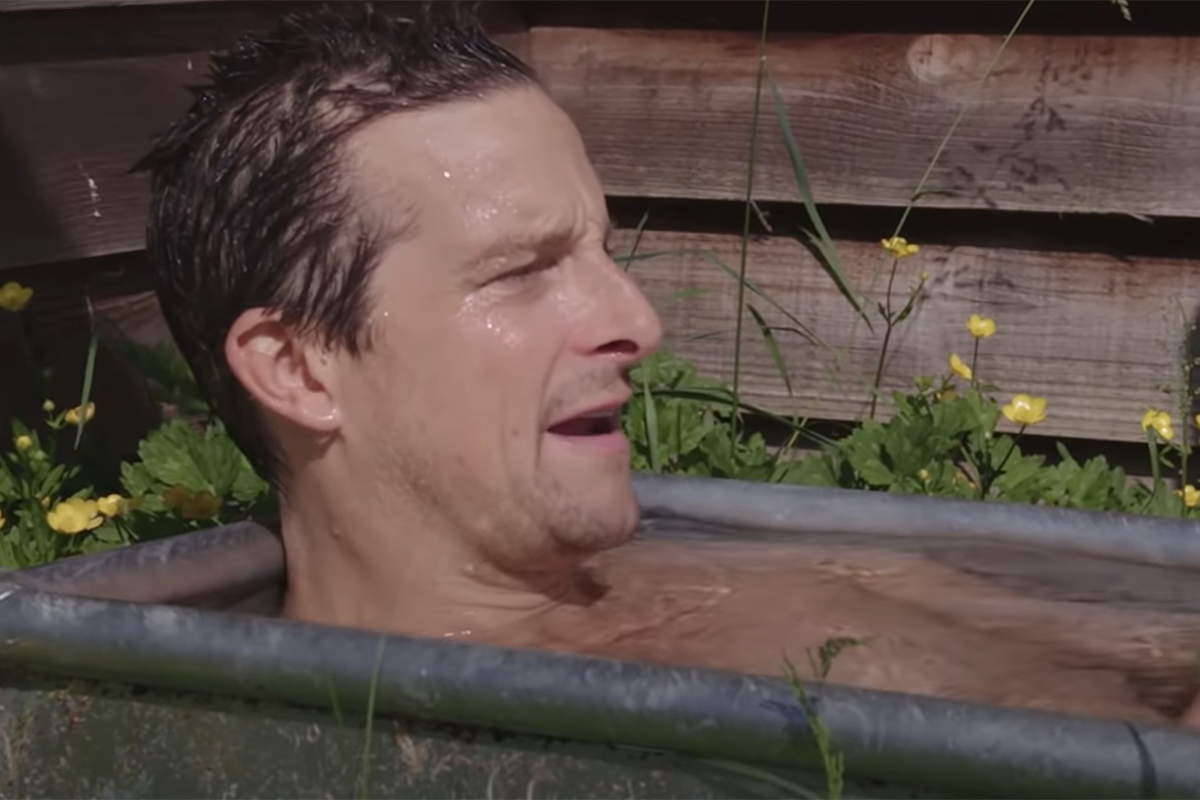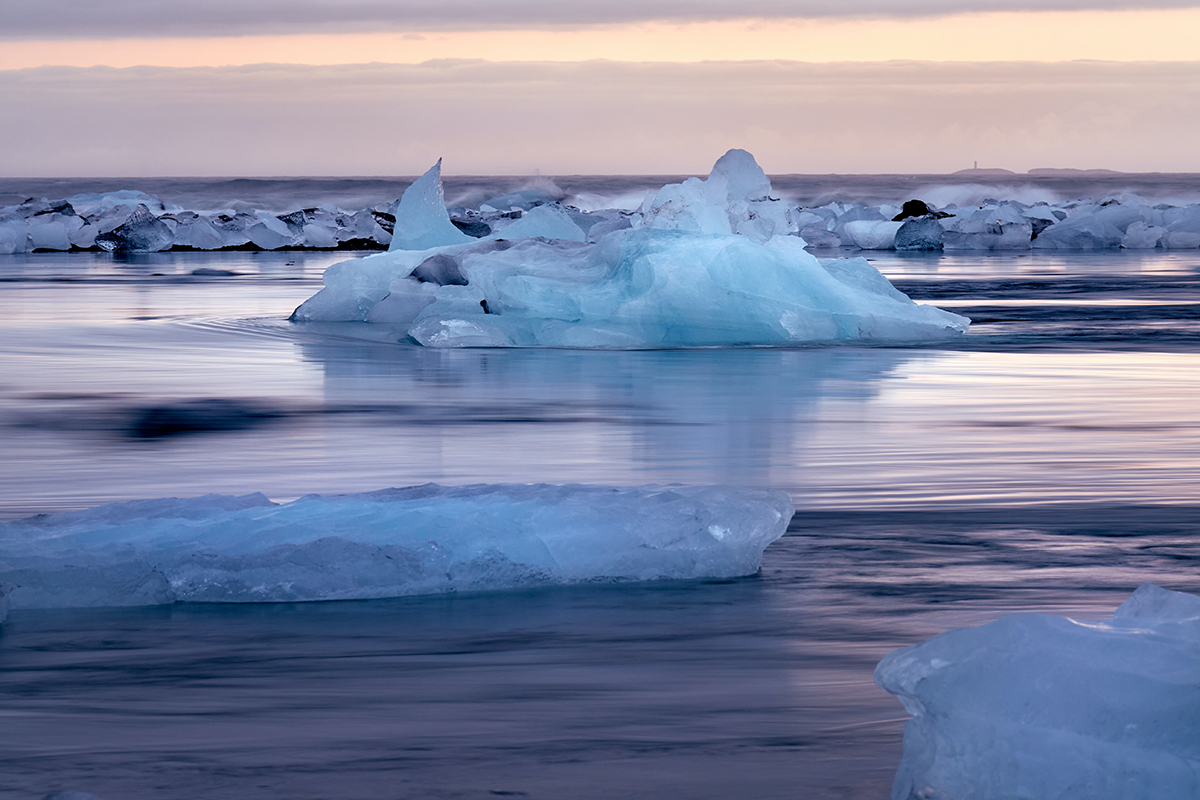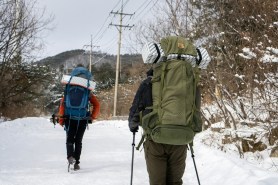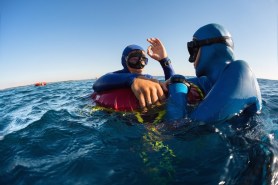

If you’ve watched a few episodes of Running Wild or Man vs. Wild, you will see that icy swims regularly pop up in Bear Grylls’s TV shows. He also posts about them regularly on his social media.
Videos by Outdoors with Bear Grylls
Bear has spent a lot of his life in cold conditions, from his first ventures climbing Snowdonia Mountain in Wales, to climbing Himalayan peaks and spending time in other mountains all over the world during the winter months. He has done lots of frozen lake swims, has swum under sections of frozen ice, and has waded across many icy cold rivers for his TV shows. Just a few months ago, Bear and the Running Wild team got under the ice in Wyoming to see how long they could last.
Disclaimer: Please research the risks involved with extreme cold water and consult with your doctor before attempting ice baths and/or cold plunges.
Cold Water Benefits and Dangers
Rather than trying to avoid scenarios with icy cold water, Bear seeks out cold water immersion—he regularly takes ice baths and finds them beneficial for his health.
He says that he has learned two things over the years:
“What I’ve learned is that cold water is dangerous and you have to be really careful with it. The other thing I’ve learned is that it’s actually quite healthy for you.”
“More and more research is coming out now that cold water, ice training, every day, even if it’s for a few minutes, can really help you, not just your immune system but also that inner resilience,” he says. “It boosts your immune system, because it shocks and refreshes all the cells. You get fresh blood flow, it improves your circulation, it’s good for your libido and you burn through calories.”
Be Aware of the Dangers
Many athletes use ice baths for post-workout recovery. There is a lot of research on the pros and cons of ice baths and scientists say you should be aware of both the benefits and the side effects—plus the extreme dangers of cold water. You need to follow the guidelines of the experts for the water temperature and also how long you stay immersed.
Immersion in cold water can cause what is known as the cold shock response – which can lead to heart attacks for any age, and it can cause fatalities even after just a few minutes. It can also lead to hypothermia, and it is not suitable for people with some health conditions such as diabetes. Always consult health professionals before trying it out.
Preparing For the Shock

Bear says he has done big trips to more than 100 cold places and says one way he prepares
himself for the shock of cold water is to keep breathing through it, and to try and slow the heart rate down. If you don’t use these techniques your body can have a shock reflex and you might find yourself gasping for breath. He also has a team of rescue experts on hand, and professionals to consult before he takes the plunge.
When he does do an icy plunge, he only stays in long enough to still be able to function– it’s different for everyone, but for Bear it’s around five minutes.
‘You’ve got a golden five minutes in ice water where your adrenaline is high and you can use that before you start losing your motor skills,” he says.
“Once you can’t touch your fingers together, then you can’t light a fire or tie a shoelace or get dressed or anything. You’ve got to use that goal of five minutes to work hard to get through the river, get in and out of the lake, and get warm.”








